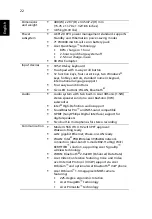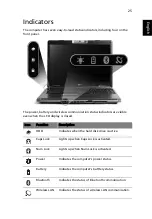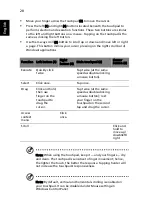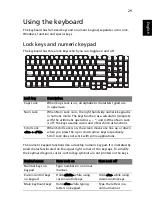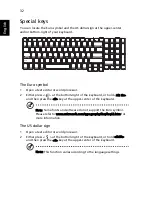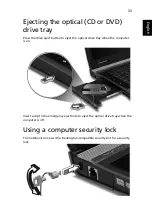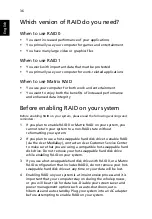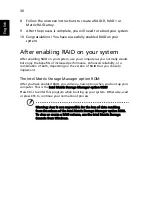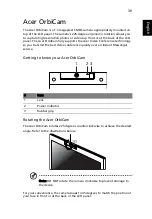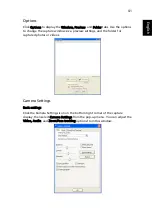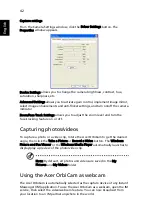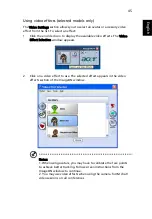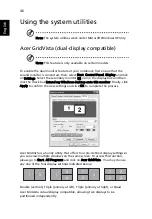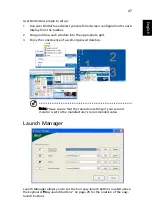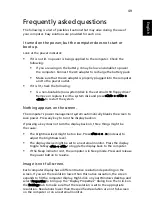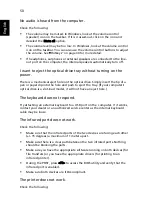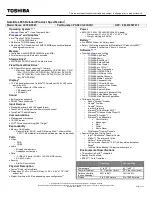
35
Eng
lis
h
Using RAID
What is RAID?
RAID stands for Redundant Array of Independent Disks, a system in which
multiple hard disk drives share or replicate data among the drives. Depending
on the version of RAID you choose to use, benefits include enhanced data
integrity (backup), better throughput (speed) or increased storage (capacity),
compared to single drives.
Your Acer computer with two Serial ATA hard disk drives supports RAID 0, RAID
1 and Intel Matrix RAID.
RAID 0
RAID 0 (also known as a striped set) splits data evenly across two or more disks
with no parity information for redundancy. RAID 0 is normally used to increase
performance, although it can also be used as a way to create a small number of
large virtual disks out of a large number of small physical ones. A RAID 0 can be
created with disks of differing sizes, but the storage space added to the array by
each disk is limited to the size of the smallest disk — for example, if a 120 GB
disk is striped together with a 100 GB disk, the size of the array will be 200 GB.
RAID 0 is useful for increasing performance for systems in which there is a high
amount of disk usage, such as those involved in intensive database work. It is
also a popular choice for gaming systems where performance is desired.
However, since data is shared between drives without redundancy, hard drives
cannot be swapped out as all disks are dependent upon each other.
RAID 1
RAID 1 creates an exact copy (or mirror) of a set of data on two or more disks.
The array can only be as big as the smallest member disk, however. A classic
RAID 1 mirrored pair contains two disks, which increases reliability by a factor of
two over a single disk, but it is possible to have many more than two copies.
Since each member can be addressed independently if the other fails, reliability
is a linear multiple of the number of members.
Intel Matrix RAID
Intel Matrix RAID utilizes two physical hard disk drives. It assigns part of each
disk to a RAID 0 array, and the other part to a RAID 1 array, allowing users to
enjoy the advantages of both RAID levels. Matrix RAID provides users with a
safe area (RAID 1) for documents and other important data that must be
protected, as well as a faster area (RAID 0) for the operating system and other
applications.
Summary of Contents for TravelMate 6500
Page 1: ...TravelMate 6500 Series User s Guide ...
Page 20: ...6 Empowering Technology ...


